7 easy ways to remove weeds from patios and pavers
Follow our tips on how to remove weeds from patios and pavers and keep your paved spaces looking their best

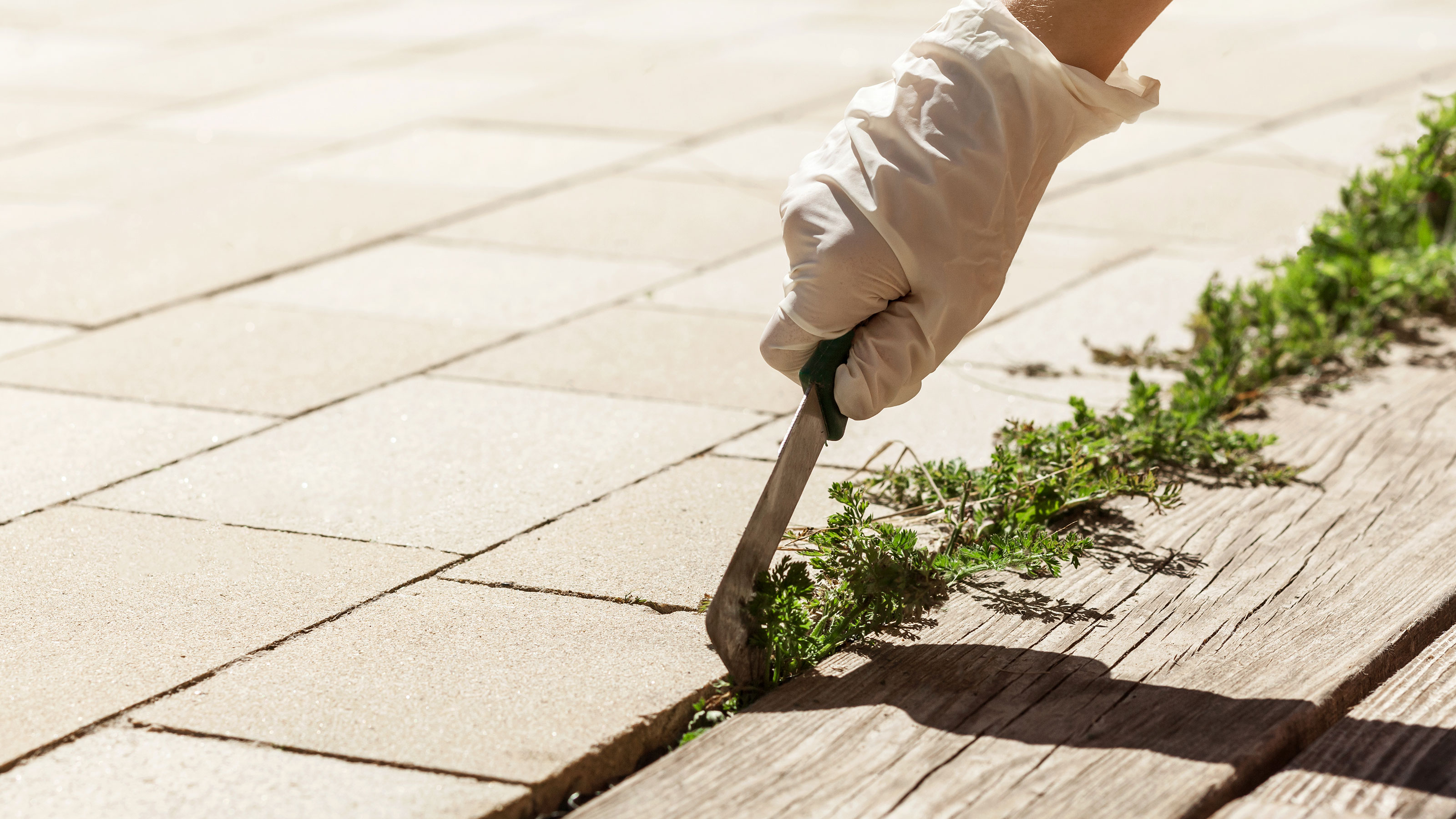
Learn how to remove weeds from patios quickly and efficiently and you can wave goodbye to weeds springing up between the cracks of your paving.
Whether your weeds are grass, chickweed, buttercup, or other persistent plants, they can quickly take over, spreading along the cracks of a patio, making it look scruffy.
Deep-rooted weeds (such as dandelion and dock) can be tricky to remove in flower borders, never mind in the narrow cracks of a patio. With a few expert tips, however, it is possible to find out how to get rid of weeds and also prevent new ones seeding.
Tidy up with tips on how to remove weeds from patios
One of the quickest ways to refresh your patio is to get rid of unsightly weeds. With that in mind, we've put together some tried-and-tested methods for removing weeds from patios and pavers so your outdoor seating space will be free of these pesky invaders before you know it.
1. Use simple weeder tools
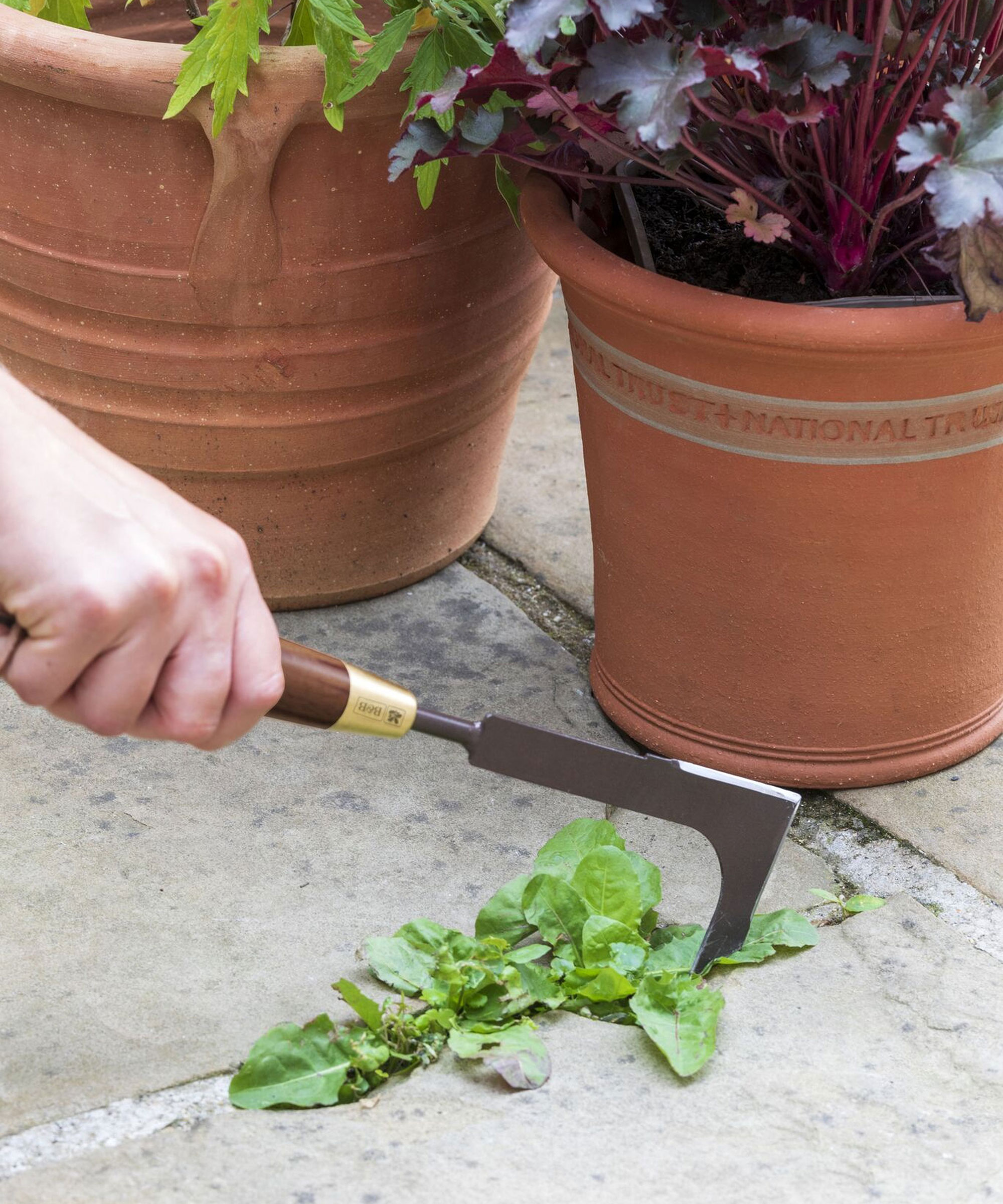
‘The best way to get rid of patio weeds is by hand weeding,’ says Emma O’Neill, Head Gardener at Garden Organic. ‘This is what we do at Garden Organic’s demonstration garden at Ryton. There are specific tools designed for weeding patios which have a blade on the end to get between the cracks of your paving and this has the same effect as hoeing.’
Investing in a good quality paving knife (try Amazon) is worthwhile if you are plagued by pernicious perennial weeds, such as dandelions. It’s easier for your knees if you use a kneeler. Long-handled knives are available for those with bad backs. For shallower weeds, a wire paving brush is excellent.
2. Tackle with a flame thrower tool
Flame throwers (also known as flame guns) are widely available tools that project fire at weeds.
‘Using a flame thrower weed gun can sometimes be easier than hand weeding, as it can be tricky to get in between the cracks of a patio to remove weed roots by hand,’ says Emma. ‘Flame throwers work by disrupting a weed’s cell structure. They are, however, best used on annual weeds, as perennial weeds will usually return, but if you keep blasting them it will weaken them. I’ve never heard of any patio damage caused by the use of a flame thrower.’
Flame guns range considerably in price – buy one with a long handle and an ignition switch for safety. Avoid flaming on windy days and ensure pets and children are indoors. Only half a second is required to sear a weed – there is no need to hold the flame over it for a long time; however, for stubborn weeds, a second flaming a week later is usually required.
Shop flame guns and throwers for your weeding your patio at Amazon.
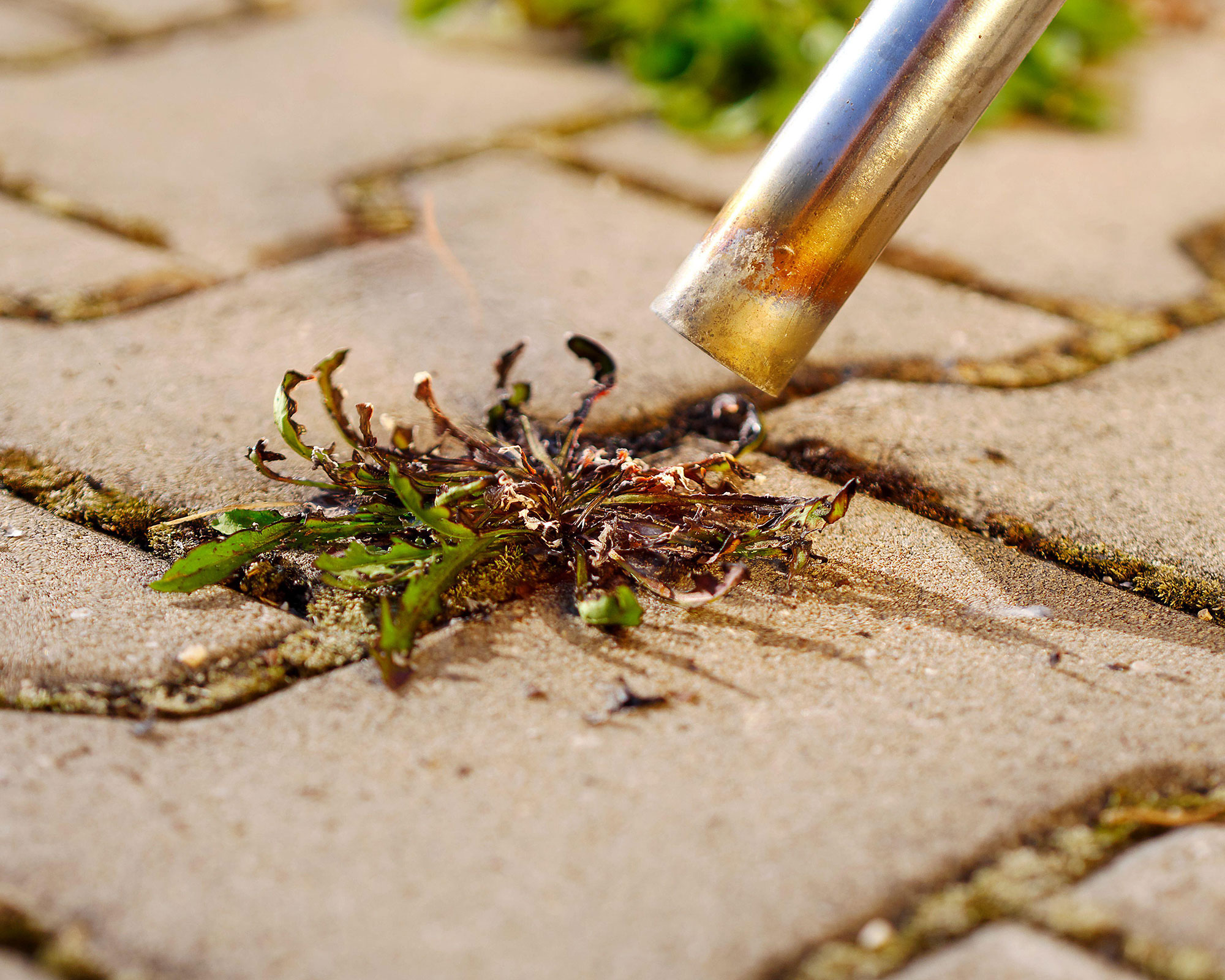
3. Pour hot water on patio weeds
‘Just-boiled or hot water is a quick, easy way to get rid of weeds between the paving of a path or patio,’ says Derry Watkins, owner of Special Plants garden and nursery in Wiltshire. ‘It’s great for stubborn perennial weeds like dandelions. I pour just-boiled water onto them directly from the kettle when they come up.’
Cut or pull off the leafy tops of the weeds. Then, wearing protective shoes and gloves, pour the kettle carefully and gently into the cracks. Bulletproof perennial weeds may regrow, but should die after two or three treatments. Of course, extremely hot water will kill insects, so while it is an effective, fast way for removing weeds from patio flooring, it isn’t wildlife friendly.
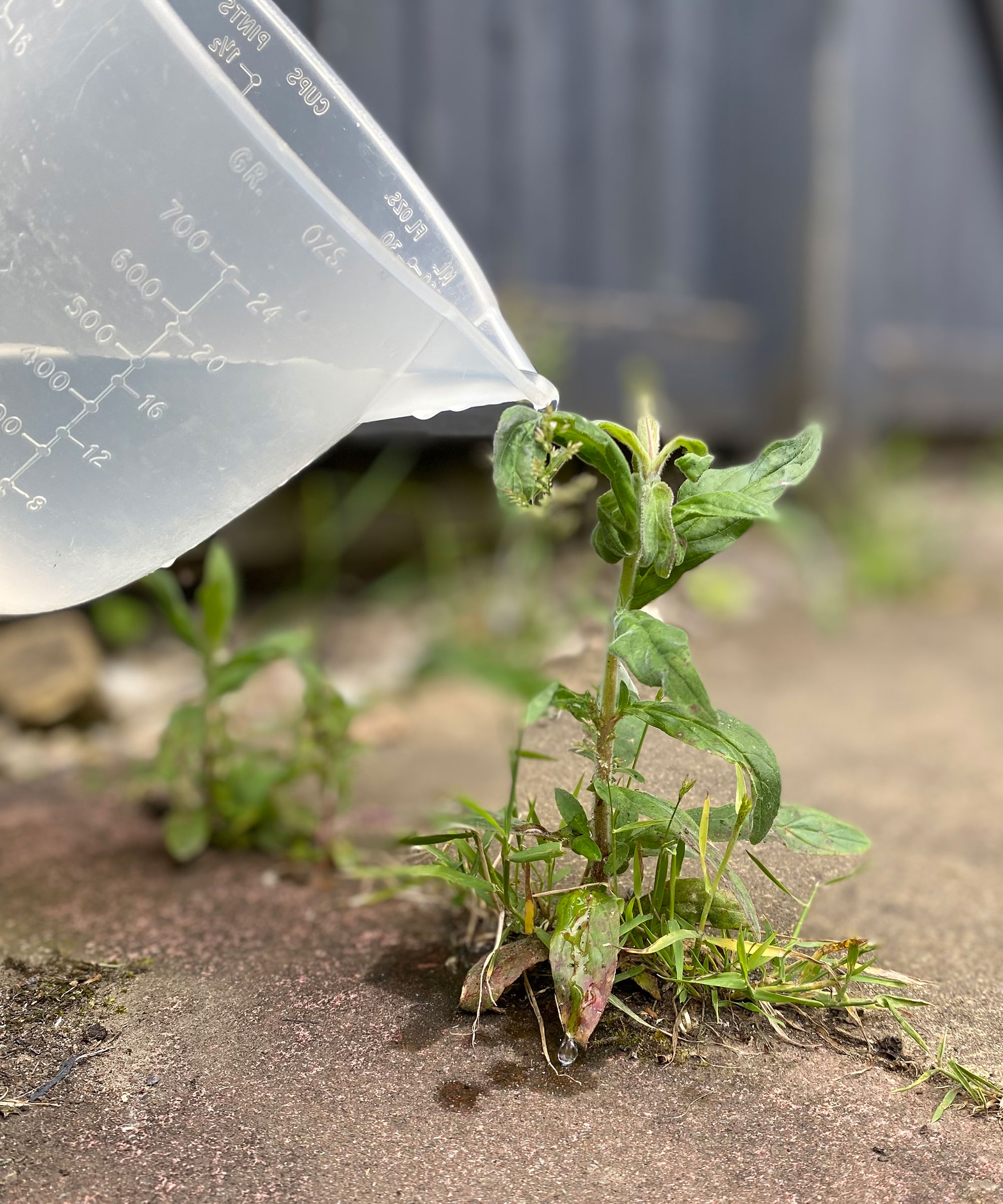
4. Kill patio weeds with vinegar
Many people use white vinegar (often mixed with soap or salt) to remove weeds from patios, pavers and even flower beds. However, because vinegar is not an approved or licensed weed killer, the Royal Horticultural Society do not recommend using it. While it can be great at removing annual or young perennial weeds, it is not especially good at removing persistent perennial weeds.
Vinegar is not the best idea in a flower bed because it will alter the soil’s natural balance (which contributes to plant and wildlife health) and could kill surrounding plants that aren’t weeds. But using it in cracks between patio paving is not so bad.
Remove the upper leafy part of the weeds first, then pour the vinegar (in a mix of half water, half vinegar) directly into the paving cracks using a suitable container (such as a plastic bottle). White vinegar is best; avoid red vinegar, as it could stain your patio paving.
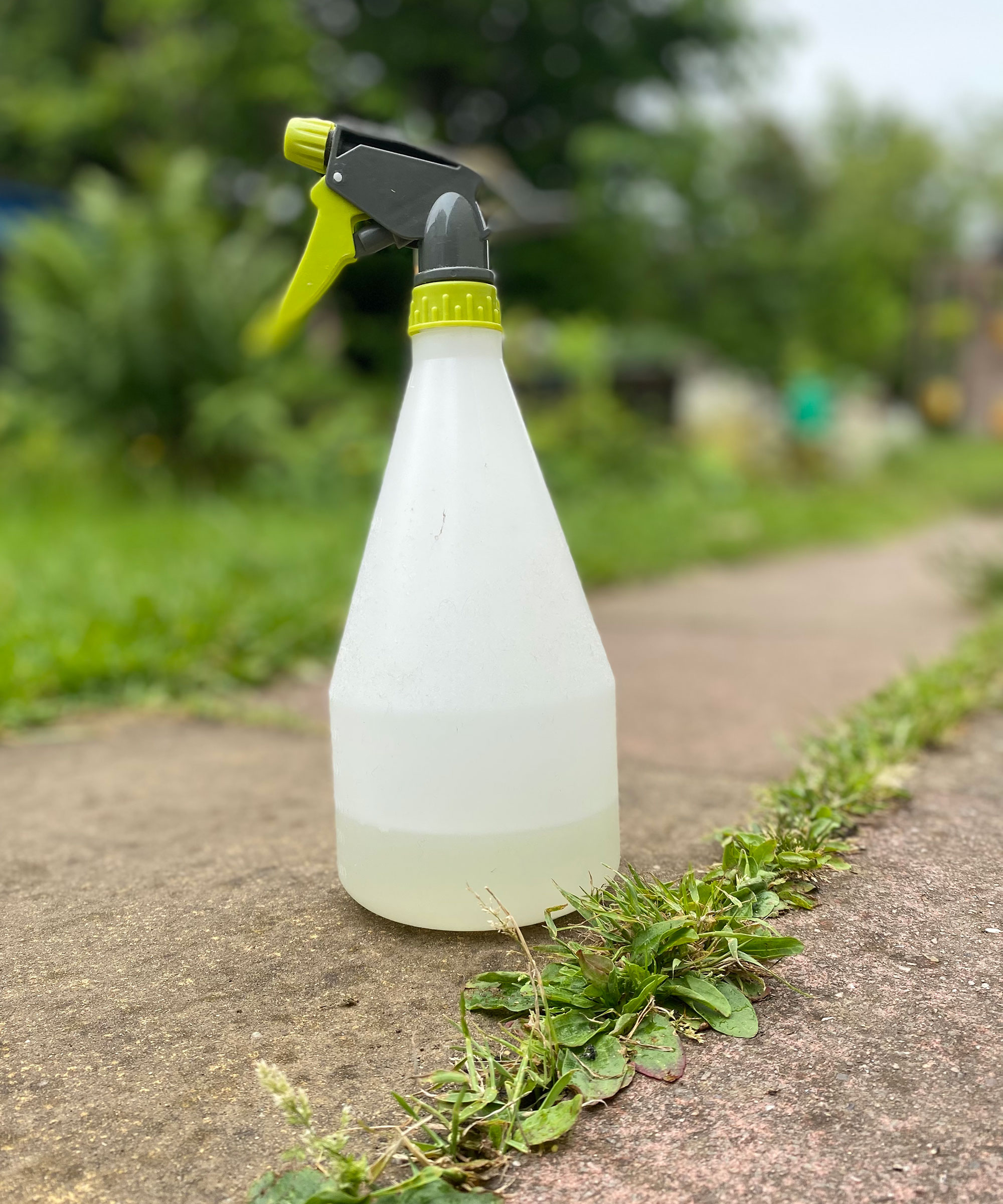
5. Get rid of persistent weeds with weed killer
The RHS does not encourage the use of weed killers and recommends that alternative control methods are used wherever possible. If you must use one of the best weed killers, first remove the leafy top portion of the weeds and then apply a weed killer (such as fatty acids, acetic acid, or pelargonic acid) in a spray bottle to ensure you are targeting the weeds in a very localised way.
If your patio stone isn’t sealed, be aware that there is a very low risk of staining it with weed killer. 'If you have an off-cut of stone, test it first,’ advises Mike Tyler at Miety Stone, which supplies natural stone patio paving. ‘It shouldn’t stain, but you never know. Because the stone isn’t sealed, there may be a reaction.’
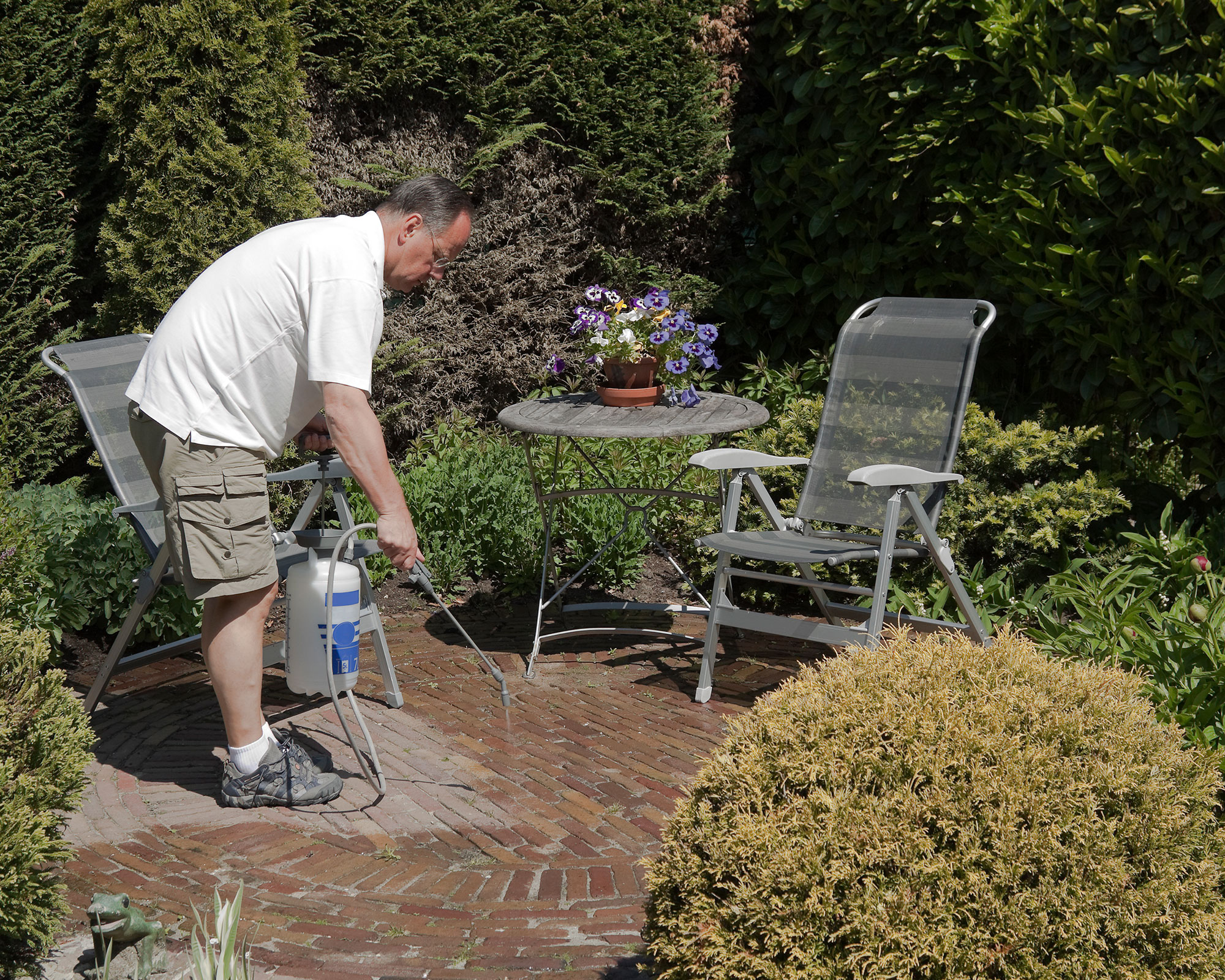
6. Prevent weeds with good pointing between pavers
‘Ensuring a patio has the right pointing is crucial to ensure that the weeds cannot break through,’ says Emma. Polymeric sand is a good material to use as it will lock the pavers in place for a long time, as well as preventing weeds.
If you have an existing patio in place that has loose pointing or soil between the paving stones, take the time to remove weeds from pavers, any old pointing, and soil before redoing the pointing.
Blasting a jet wash up close is great way to clean a patio and get the soil out. Use a container (such as a plastic bottle) to pour the polymeric sand into the cracks; brush as much of it off the surface of your patio materials as you can; then wet the polymeric sand by spraying the patio with the hose on a light mist setting – you want to soak the sand, but don’t use a powerful water jet that will flush it out.
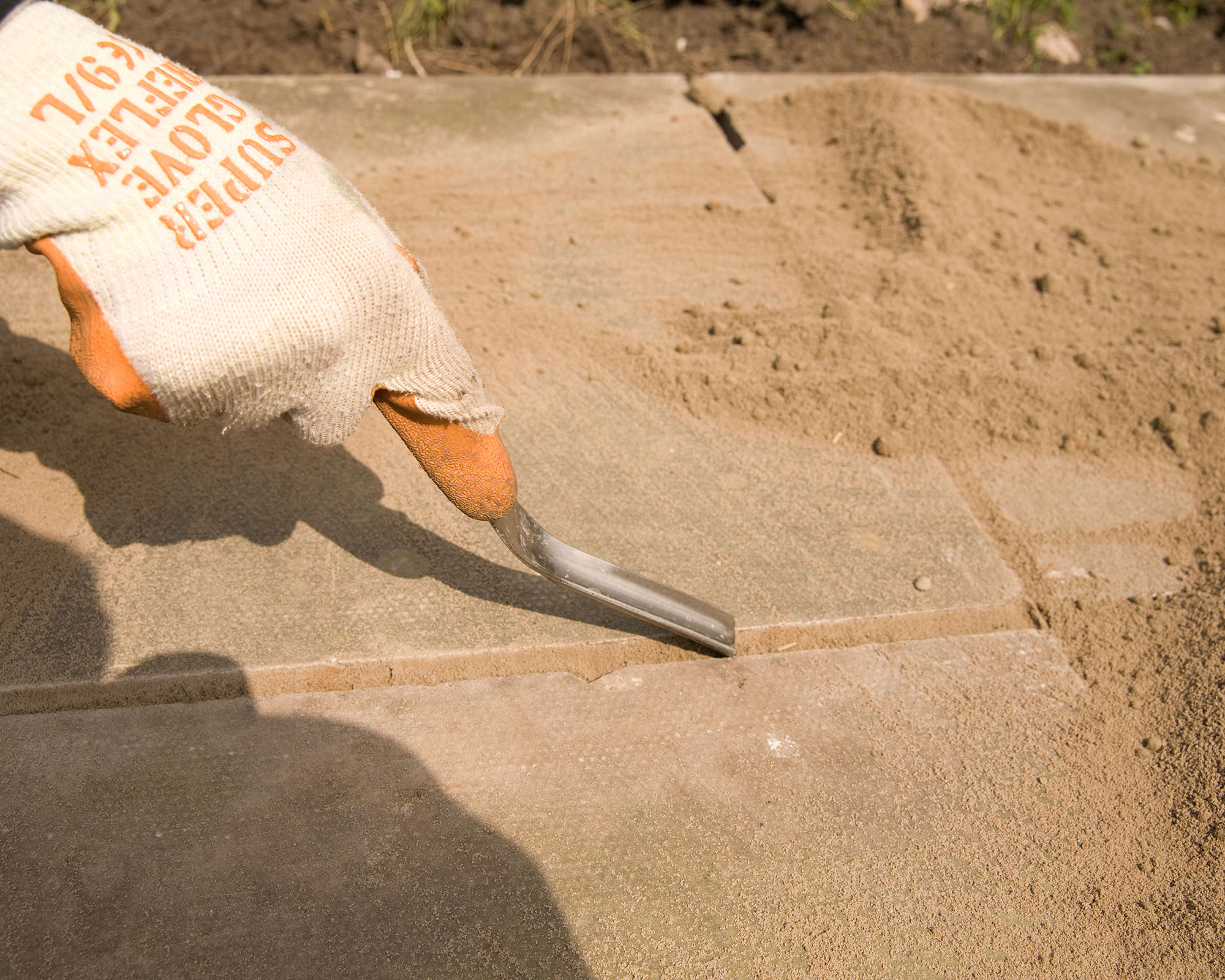
7. Grow ornamentals in patio cracks
A bare patio can look bleak if the stone isn’t a soft color and it covers a large expanse. A good way to prettify it is to allow ornamental plants to grow in between the cracks. Some (such as Mexican fleabane and trailing bellflower) need to be in areas where there isn’t any foot traffic, such as your patio edging, while others (including bugle and creeping thyme) can tolerate the odd trampling. Once they take hold, they will dominate the weeds.
Of course, some so-called ‘weeds’, such as daisies and speedwell, are arguably very pretty and provide pollinators (including bees) with nectar, so many gardeners choose to let these bee-friendly plants grow in patio cracks, while removing scruffier weeds, such as grass.
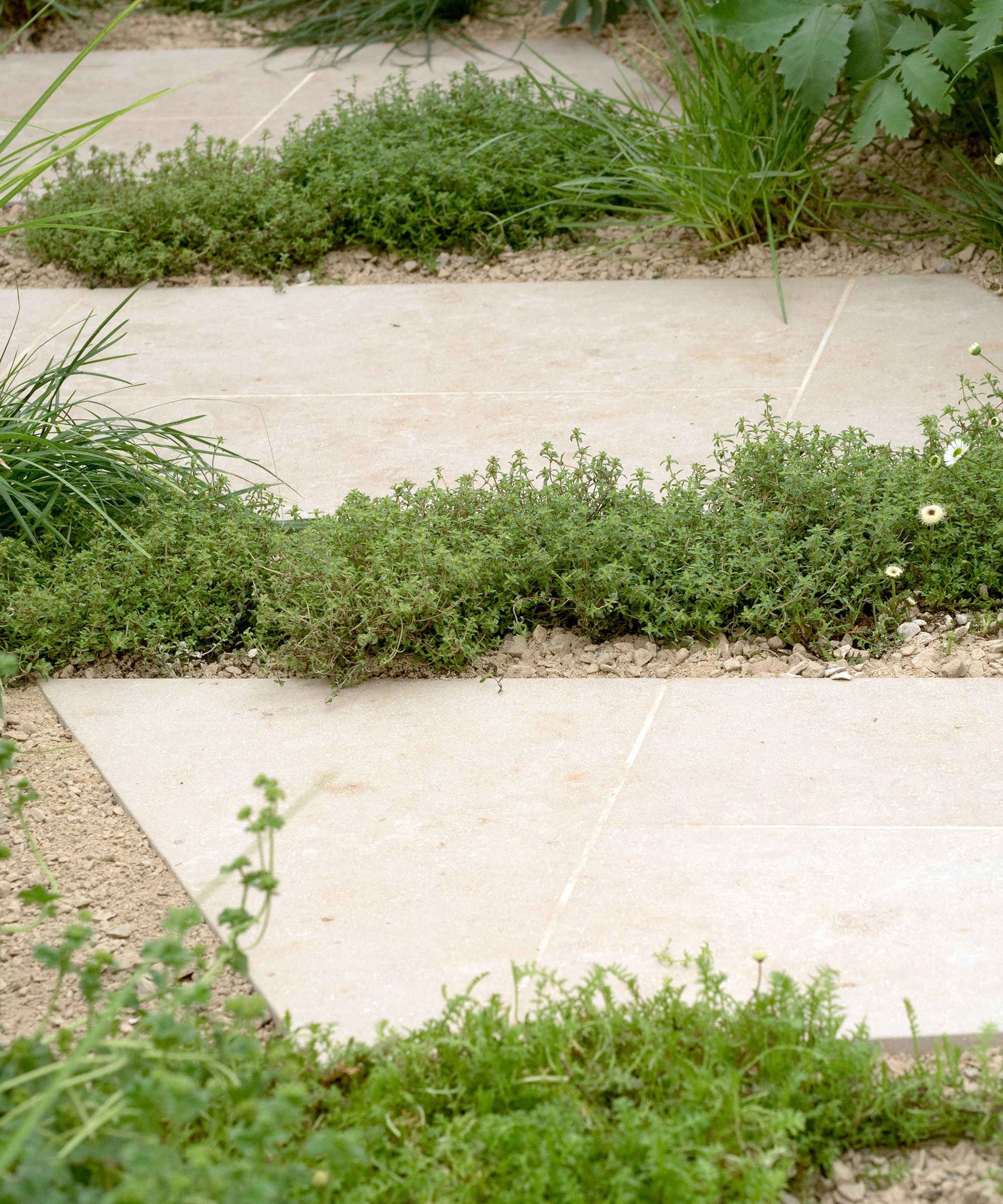
How do you get rid of weeds between patio stones?
There are several methods that are effective. The most eco-friendly option is to do it by hand using a paver weeding tool. Flame throwing and just-boiled water – while they will kill insects – are the second-best choices when we’re looking to remove weeds from patios in an environmentally friendly way. Once the weeds are out, we can prevent new ones seeding by planting ornamentals in the cracks or filling the cracks with pointing or gravel.
Will vinegar kill weeds between pavers?
Vinegar is not recommended by the RHS as it is not a licensed weed killer. It can also be damaging if it seeps into flower beds. While it can be very effective in removing annual weeds or young perennial weeds in the cracks between patio paving, it is often best to opt for other methods (such as a paving knife or a flame gun) instead.

For the past 18 years, Beth has worked for and contributed to a number of leading magazines in the UK, including Real Homes, Ideal Home, Period Living, Grand Designs and Good Homes amongst others. Now the editor of Gardeningetc.com, Beth's attention is firmly outdoors. Her own garden is a really important part of her family's home, and she loves spending time tending to the veg patch or entertaining friends and family at a summer BBQ or alfresco pizza night.
